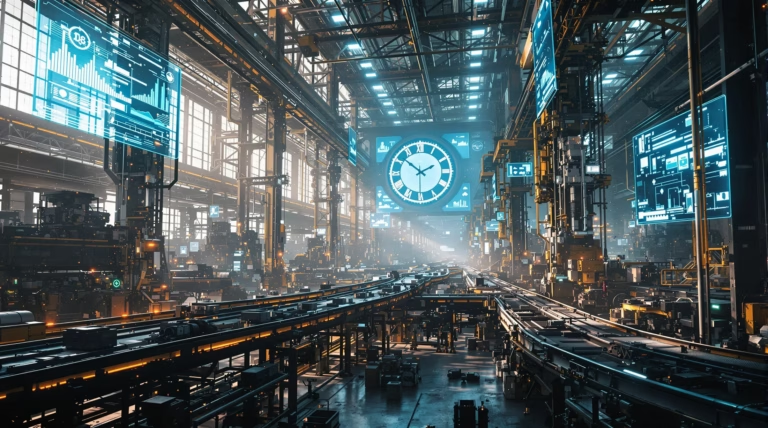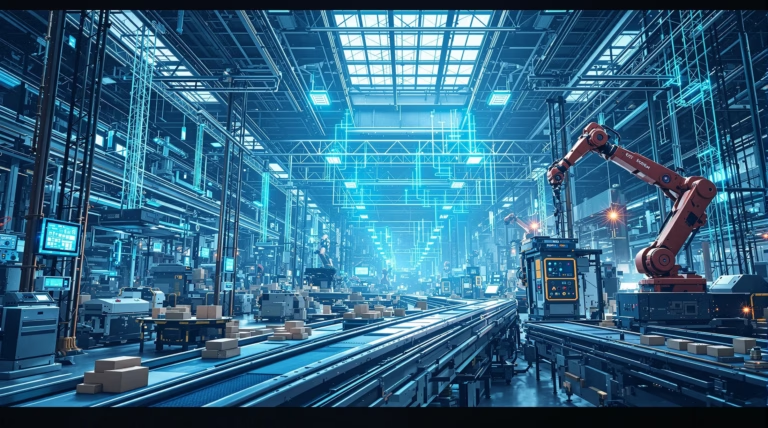Manufacturing Simulation: Enhancing Efficiency and Productivity
Discover how manufacturing simulation is revolutionizing production processes and driving unprecedented efficiency gains across industries. Through virtual modeling and testing, businesses can now optimize their operations with minimal risk and maximum precision.
Understanding Manufacturing Simulation
Manufacturing simulation represents a revolutionary technology that enables businesses to create digital replicas of their production environments. This technology allows companies to model, experiment with, and optimize manufacturing processes before implementing changes in real-world settings. By using virtual representations, manufacturers can visualize production workflows, test various scenarios, and make data-driven decisions that significantly impact operational efficiency.
At its core, manufacturing simulation provides a risk-free playground where organizations can explore process improvements without disrupting actual production. These digital models—whether simple representations or sophisticated digital twins—offer valuable insights into how modifications might affect output, quality, and resource utilization. With the growing complexity of modern manufacturing systems, simulation software has become an essential tool for companies seeking to maintain competitive advantage in increasingly demanding markets.
What is Manufacturing Simulation?
Manufacturing simulation is a digital approach that creates virtual models of production processes, equipment, and facilities to analyze their performance under various conditions. These digital models—which can take the form of digital shadows or comprehensive digital twins—represent real-world manufacturing operations with remarkable accuracy. Through simulation, manufacturers can evaluate different production schedules, assess the impact of changing product mixes, and identify bottlenecks before they cause problems on the actual production floor.
Unlike traditional trial-and-error methods, virtual manufacturing allows companies to predict outcomes with precision. Modern simulation tools can account for numerous variables simultaneously, including machine capabilities, worker productivity, material flows, and quality parameters. This capability enables manufacturers to validate new production methods, optimize existing processes, and reduce the time and costs typically associated with physical testing.
Types of Manufacturing Simulations
- Process simulations – focus on modeling manufacturing steps and workflow optimization
- Equipment simulations – create virtual machinery representations for performance testing
- Layout simulations – experiment with floor plans and equipment arrangements
- Discrete event simulations – model production as specific time-based events
- Continuous simulations – analyze uninterrupted processes
- Agent-based simulations – capture interactions between autonomous manufacturing entities
Benefits of Manufacturing Simulation
Manufacturing simulation offers transformative advantages for production environments by creating virtual replicas of manufacturing processes. This technology enables companies to experiment with production scenarios in a risk-free digital environment before implementing changes on the factory floor. By virtualizing testing and analysis, manufacturers can identify potential bottlenecks, validate new production methods, and optimize resource allocation without disrupting actual operations.
Enhancing Efficiency and Productivity
- Complete visualization of production dynamics
- Identification of hidden workflow inefficiencies
- Detection of underutilized equipment
- Virtual commissioning before physical implementation
- Optimization of lean production methodologies
- Enhanced staff scheduling capabilities
Cost Reduction and Resource Optimization
| Cost Saving Area | Benefit |
|---|---|
| Early Problem Detection | Up to 100x cost reduction compared to production-phase discovery |
| Resource Allocation | Optimal distribution of equipment, personnel, and materials |
| Investment Planning | Precise ROI calculations for new equipment |
| Operational Costs | Reduced energy consumption and optimized inventory levels |
Key Technologies in Manufacturing Simulation
Manufacturing simulation is experiencing a technological transformation through innovative tools that revolutionize production process design and optimization. These advanced technologies create comprehensive virtual environments where manufacturers can test, refine, and validate production strategies without physical implementation risks or costs. Through these simulation capabilities, companies gain unprecedented operational visibility, enabling them to optimize workflows and maximize resource utilization.
The advancement in computing power has enabled more complex and accurate simulations, allowing for realistic modeling of manufacturing systems with multiple variables. Modern simulation platforms integrate:
- Artificial intelligence algorithms for predictive analysis
- Machine learning capabilities for pattern recognition
- Real-time data processing for immediate insights
- Predictive modeling for system-wide impact assessment
- Continuous improvement frameworks for competitive advantage
Role of Digital Twin Technology
Digital twin technology creates virtual replicas of physical assets that mirror real-world manufacturing environments with exceptional accuracy. These digital counterparts connect to their physical equivalents through IoT sensors and data feeds, enabling real-time monitoring, analysis, and optimization of production processes. The technology facilitates virtual facility tours and remote decision-making, transforming stakeholder collaboration.
| Digital Twin Capability | Operational Impact |
|---|---|
| Real-time Performance Monitoring | Immediate detection of operational anomalies |
| Predictive Maintenance | Prevention of equipment failures |
| Virtual Process Validation | Risk-free testing of new methods |
| Scenario Analysis | Optimization of production parameters |
Advanced Simulation Software
Modern simulation software platforms combine multiple modeling approaches to address complex manufacturing challenges. These sophisticated tools integrate discrete event simulation, agent-based modeling, and physics-based analysis within user-friendly interfaces, making powerful analytical capabilities accessible to engineers and managers without specialized programming expertise.
- Design Phase Benefits – Early validation of production methods and problem prevention
- Process Optimization – Identification of inefficiencies without operational disruption
- Equipment Integration – Analysis of new machinery impact on existing systems
- Material Flow – Optimization of resource movement and utilization
- Team Collaboration – Creation of shared digital models for process improvement
Challenges and Solutions
Manufacturing simulation implementation faces several critical challenges that can affect successful adoption. The most significant barriers include:
- Data quality issues and accuracy of input information
- Fragmented data sources and inconsistent measurement practices
- Complex integration requirements with existing enterprise systems
- Stakeholder resistance to change from traditional planning methods
- Gaps in historical performance records
To overcome these obstacles, organizations can implement structured solutions combining technical and organizational approaches:
| Challenge Area | Solution Strategy |
|---|---|
| Data Limitations | Start with focused pilot projects in areas with robust data availability |
| System Integration | Implement middleware solutions for seamless data flow |
| Expertise Development | Establish training programs and centers of excellence |
| Strategic Alignment | Connect simulation initiatives with lean manufacturing principles |
Future Trends in Manufacturing Simulation
Manufacturing simulation is evolving from isolated analytical tools into integrated collaborative frameworks. Modern platforms now enable cross-functional team collaboration, leveraging advanced computing power to run complex scenarios in reduced timeframes. This transformation has made simulation insights accessible across organizations, from production planning to financial forecasting, creating a holistic approach to operational optimization.
Emerging Technologies
Digital twin technology leads innovation in manufacturing simulation, creating dynamic virtual environments that mirror entire production systems. These advanced models incorporate:
- AI and machine learning algorithms for predictive maintenance
- Self-optimizing systems with automatic parameter adjustment
- Component-based simulation models for rapid testing
- Cloud-based platforms enabling global collaboration
- Edge computing capabilities for real-time optimization
Impact on Global Manufacturing
Advanced simulation tools are democratizing access to sophisticated analytical capabilities, enabling smaller manufacturers to compete more effectively with larger organizations. This technological evolution delivers multiple benefits:
- Enhanced competitive capabilities for small and medium manufacturers
- Improved sustainability through precise resource optimization
- Accelerated knowledge transfer between global manufacturing centers
- Greater resilience in supply chain management
- Support for circular economy principles and carbon-neutral production







